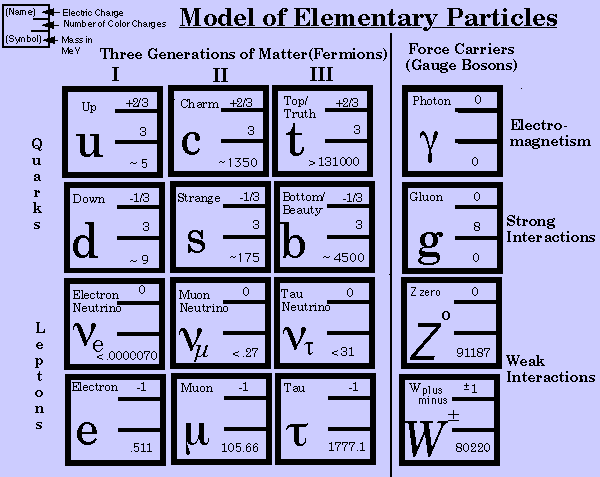High Energy Physics and the Standard Model
High-energy physics is the science of the fundamental nature of matter. Studying subatomic particles and forces gives us a key to understanding the simple physical laws that govern the universe. The theoretical picture that describes how the elementary particles are organized and how they interact with one another via the forces is called the Standard Model.
Previous generations of high energy particle physics research have revealed the structure of the atom with its nucleus and orbiting electrons. Penetrating still deeper into this structure, present-day research focuses on the composition of the individual particles inside the nucleus, studying their properties and the ways in which they interact. A continuing series of probing experiments has resulted in the discovery of more and more particles. Like all scientists, the physicists look for symmetry and patterns in the world around them and seek to put order and organization into the large and confusing array of so-called elementary particles.
Decades of painstaking experiments and theoretical insights have led to a surprisingly simple picture of the world of elementary particles and the laws they obey. According to this physical theory, known as the Standard Model, the most fundamental particles fall into three categories: the leptons, the quarks, and the gauge bosons. Leptons include the electrically charged electrons, two unstable particles similar, but heavier than electrons, and neutral particles called neutrinos. Two kinds of quarks, called "up" and "down", make up the protons and neutrons, but heavier, less stable quarks also exist. Gauge bosons give rise to the strong, weak, and electromagnetic forces, which govern the interaction of the quarks and leptons.

The table above shows the three generations of elementary particles known today. Included are six quarks (up, down, strange, charm, bottom, top), six leptons (electron, muon, tau, and a neutrino associated with each of the three), and four types of force-carrying particles, the bosons (photon, gluons, Z, W). Only the quarks feel the effects of the strong nuclear force. The quarks and the leptons are subject to the weak nuclear force. All particles that have electric charge, including the W+ and W-, feel the electromagnetic force.



